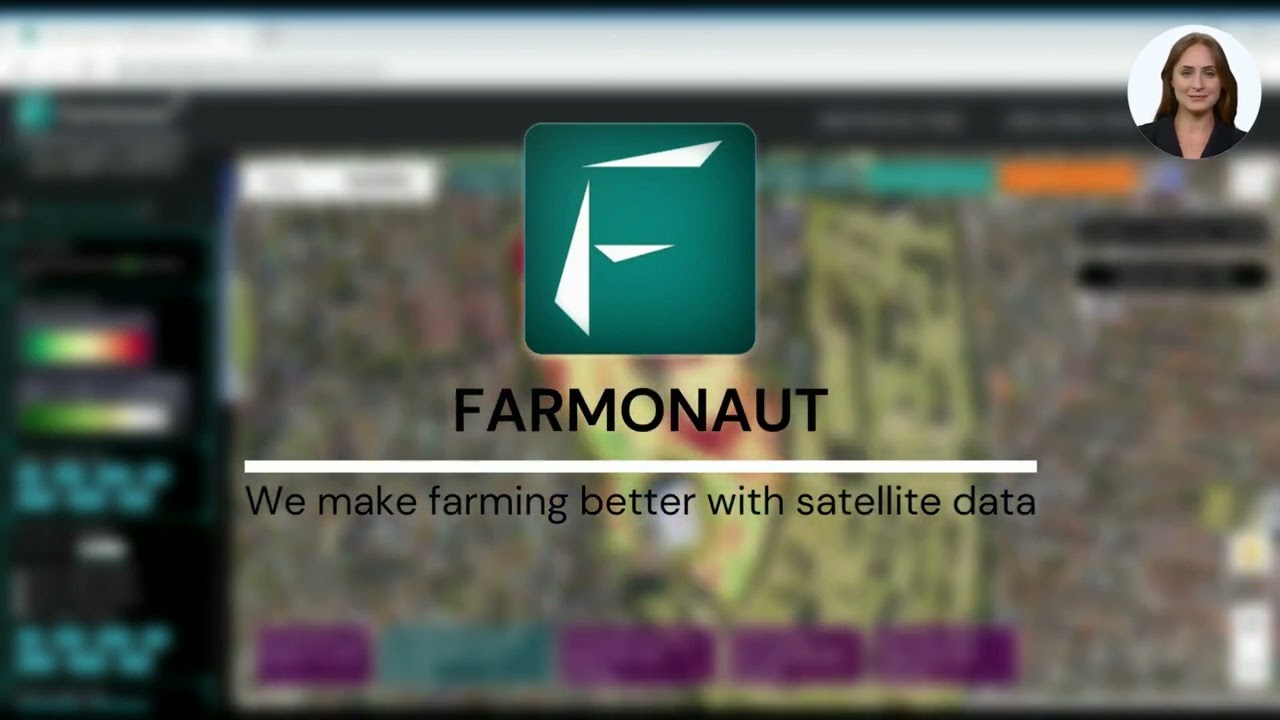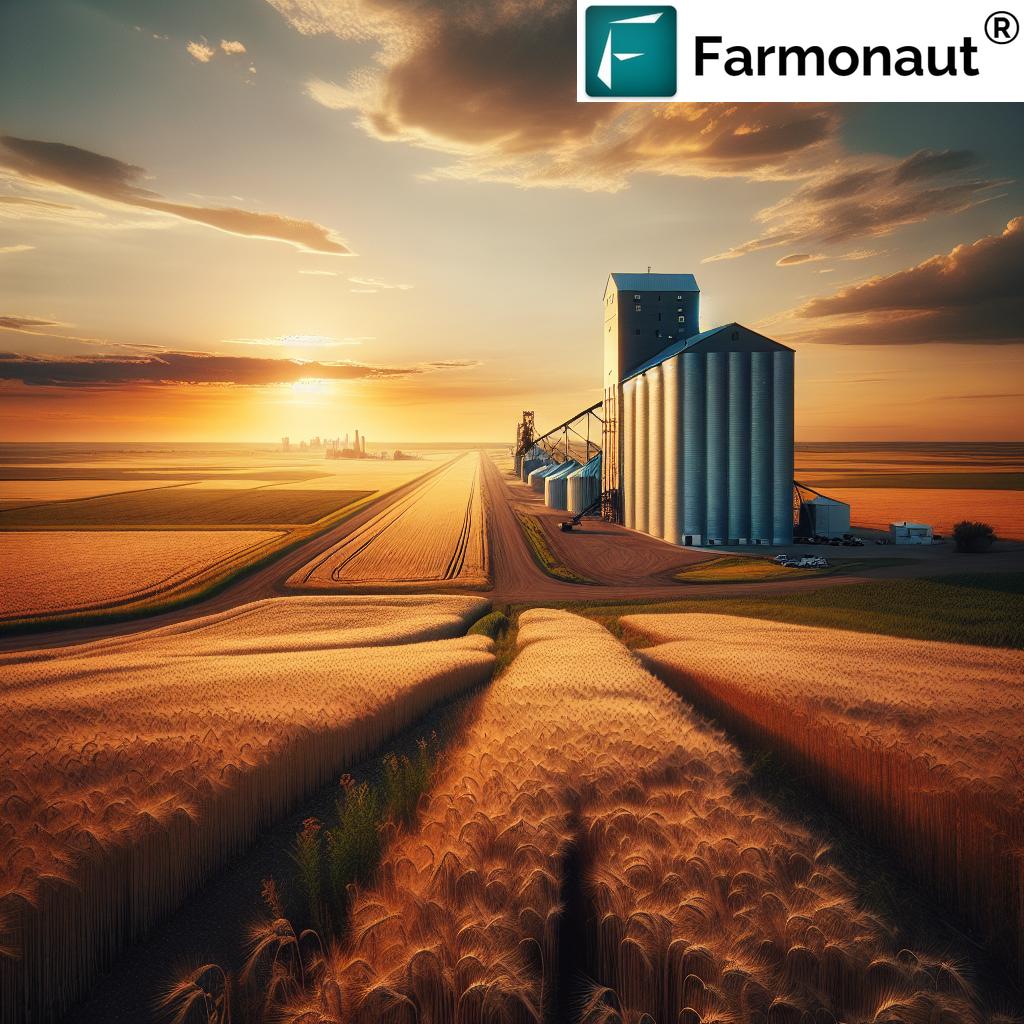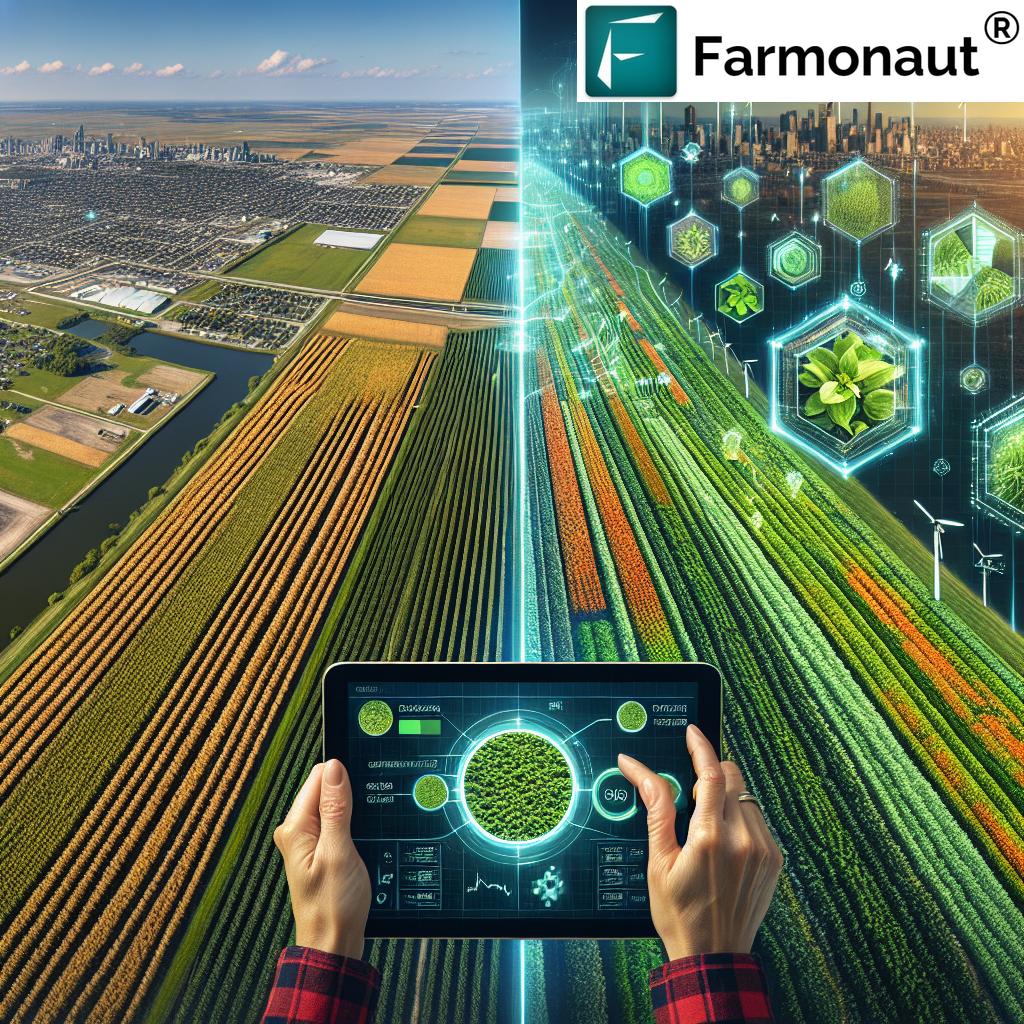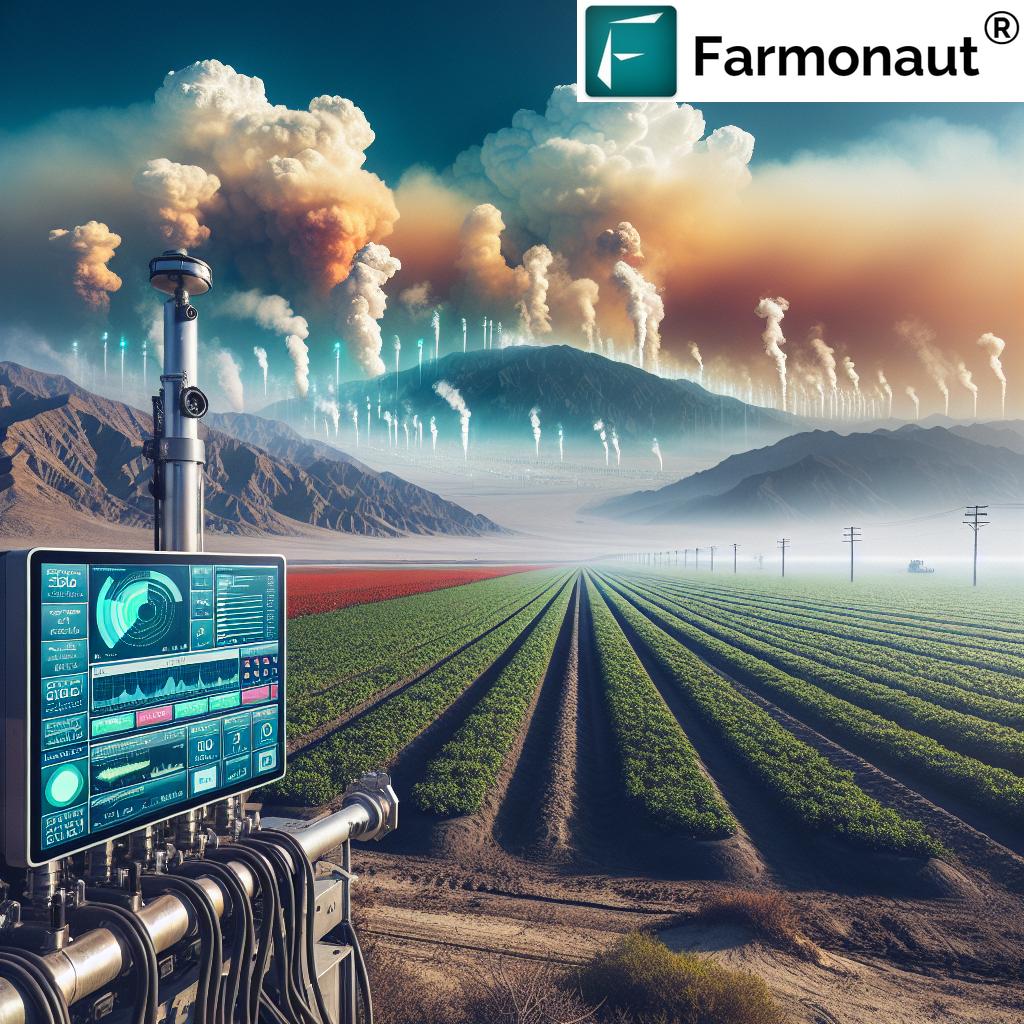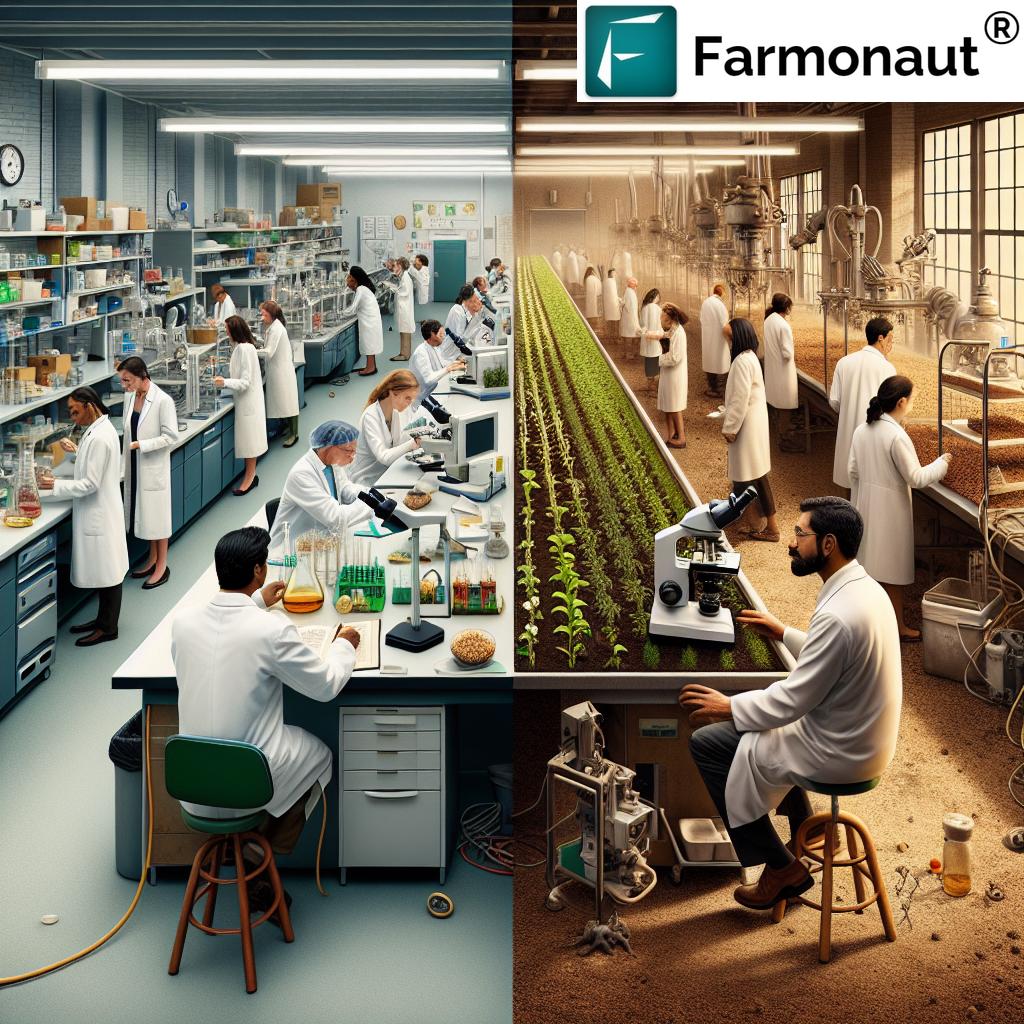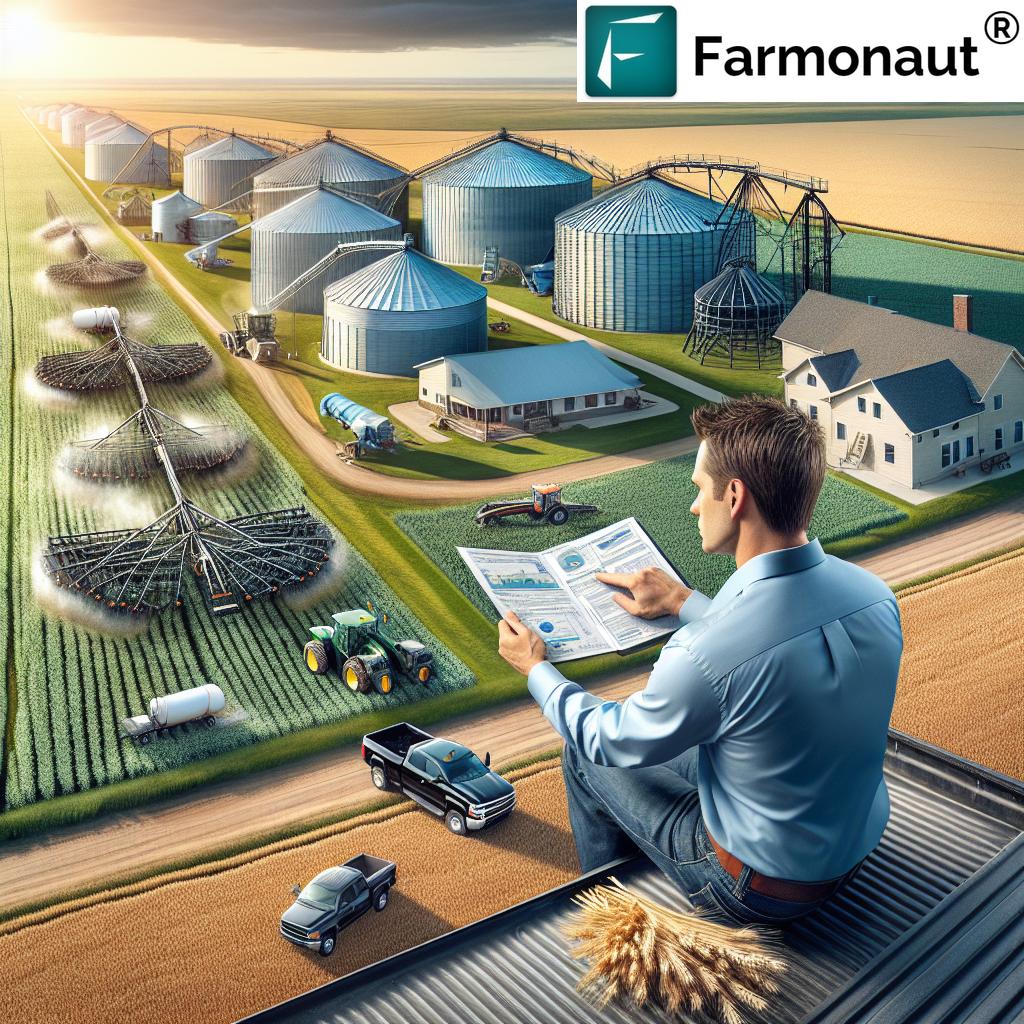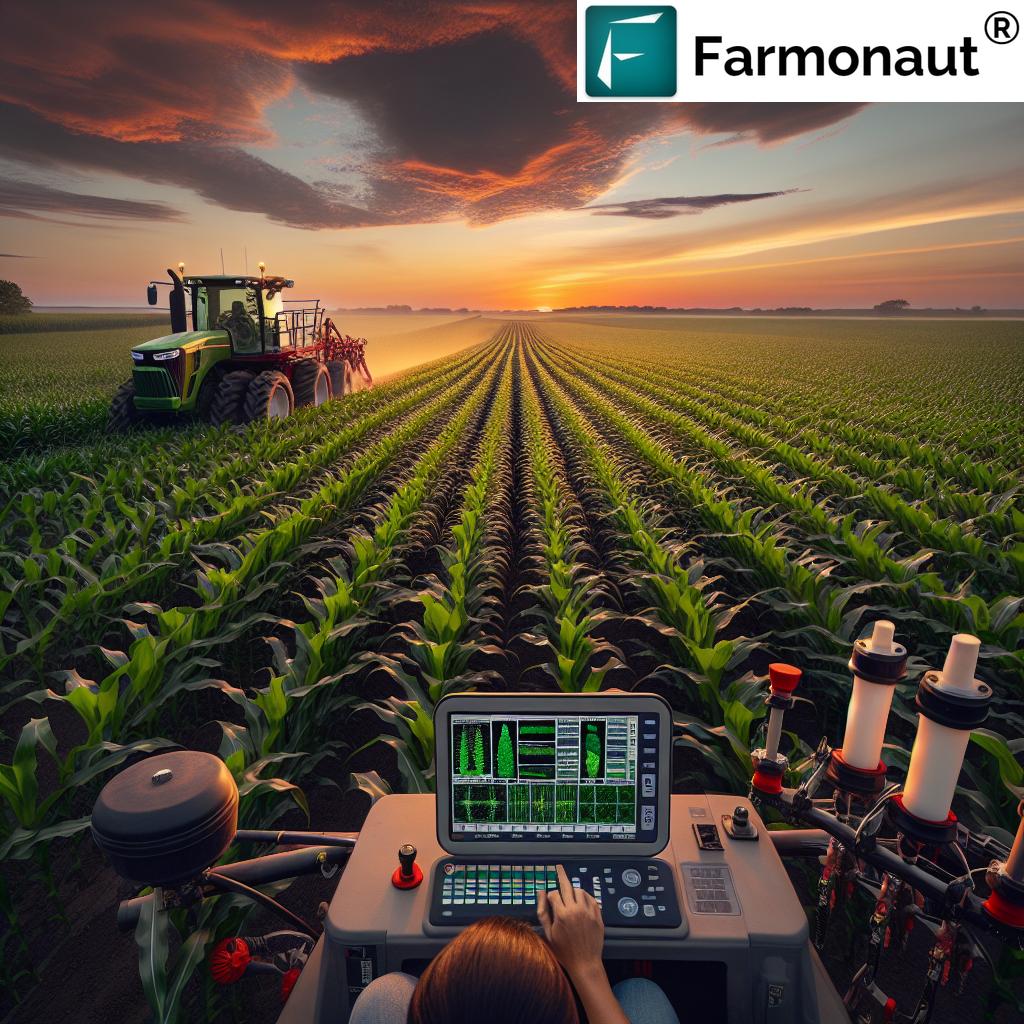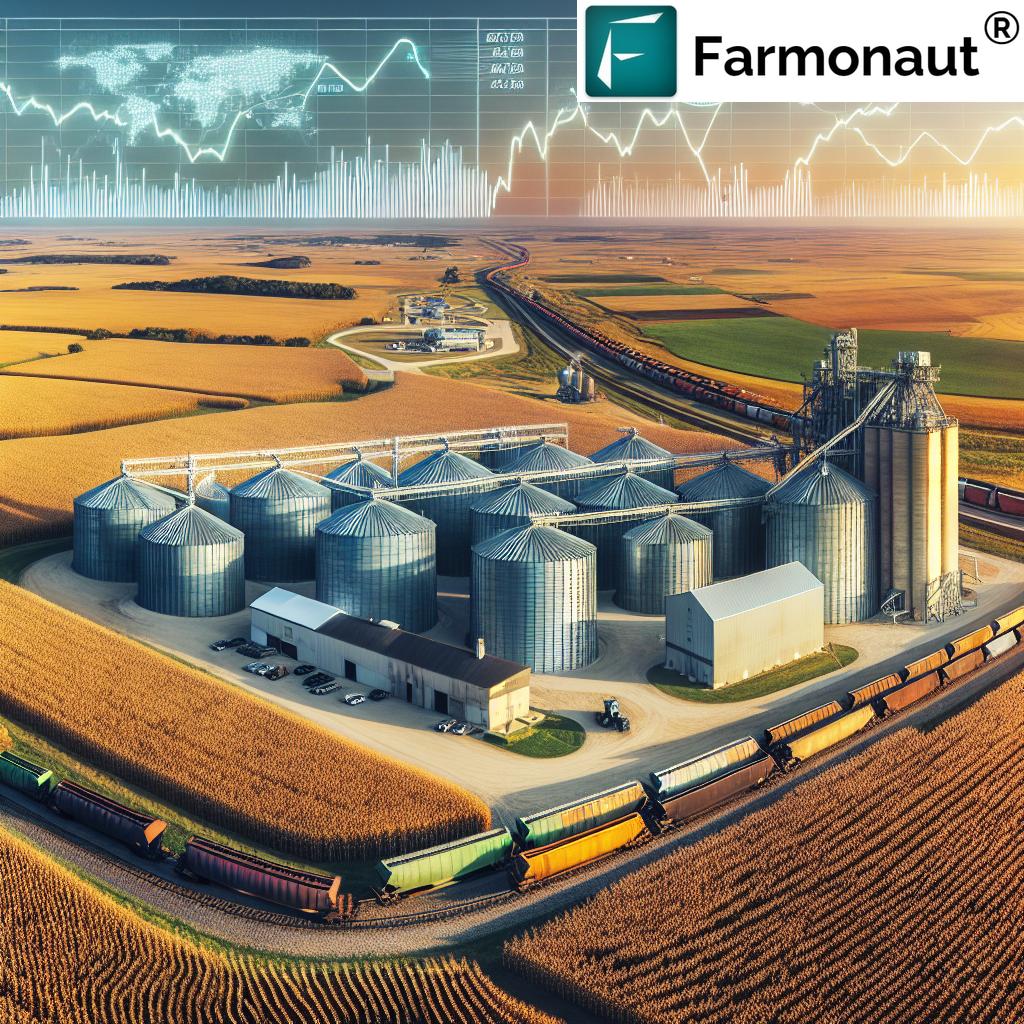2024 Agricultural Trends: How Farmonaut’s Drone Technology is Revolutionizing Precision Farming in California
“California’s agricultural sector employs over 420,000 people, making it the state’s largest industry by employment.”
As we delve into the agricultural landscape of 2024, we find ourselves at the forefront of a technological revolution that is reshaping the way we farm. In this comprehensive industry update, we’ll explore how agricultural technology innovations, particularly drone applications in farming, are transforming the fields of California and beyond. Our focus will be on the cutting-edge developments in precision agriculture techniques and farm management solutions that are paving the way for a more sustainable and productive future in agriculture.
The Rise of Precision Agriculture in California
California, known for its diverse and bountiful agricultural output, has always been a pioneer in adopting new farming technologies. In 2024, we’re witnessing a significant shift towards precision agriculture, with Farmonaut leading the charge in drone technology applications. This shift is not just a trend; it’s a necessary evolution in response to challenges such as drought, labor shortages, and the need for more sustainable farming practices.
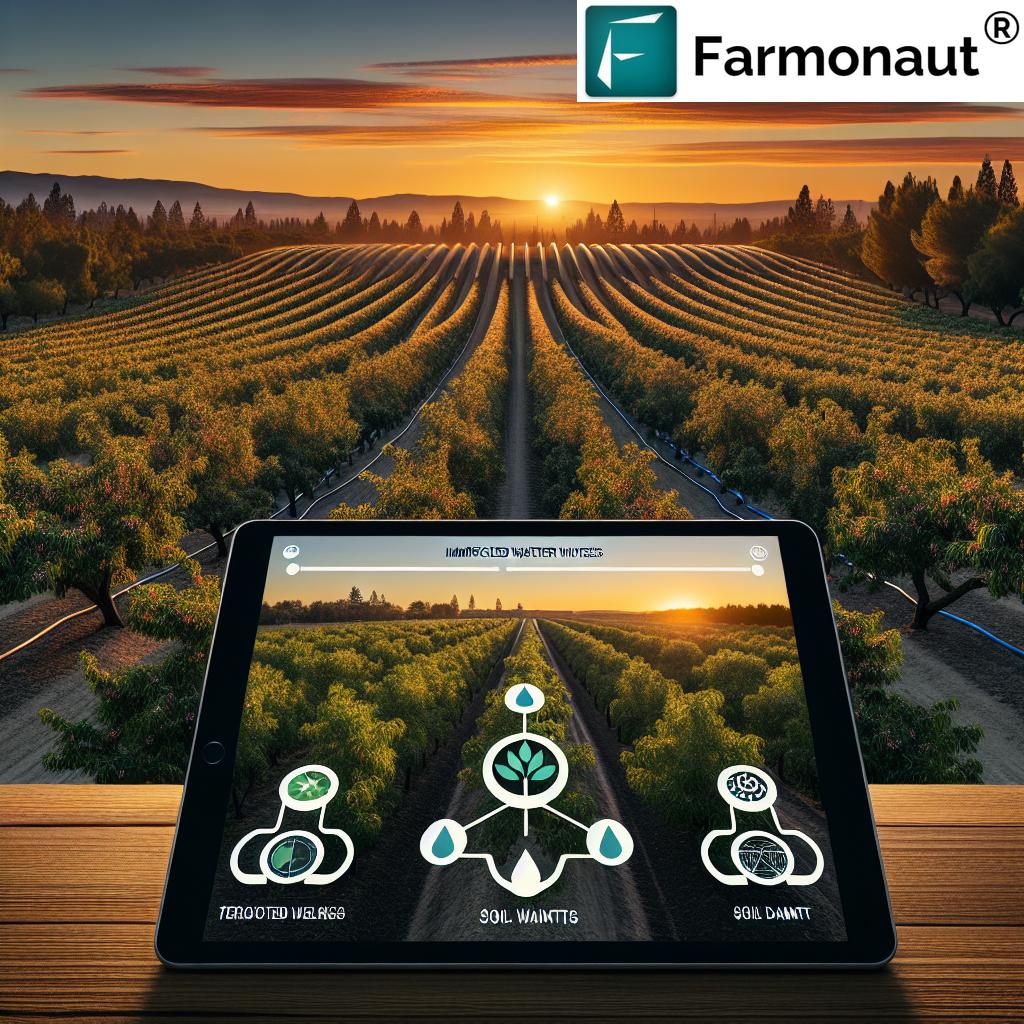
Farmonaut’s drone technology is at the heart of this agricultural revolution. By integrating advanced satellite imagery with drone-captured data, Farmonaut provides farmers with unprecedented insights into their crops and land. This technology is not just about capturing images; it’s about delivering actionable intelligence that can significantly improve farm management and crop yields.
Drone Applications Transforming California Farms
Let’s explore some of the key ways in which Farmonaut’s drone technology is being applied in California’s agricultural sector:
- Crop Health Monitoring: Drones equipped with multispectral cameras can detect early signs of crop stress, disease, or pest infestations before they’re visible to the human eye.
- Precision Irrigation: By mapping soil moisture levels, drones help farmers optimize their water usage, a critical factor in drought-prone California.
- Fertilizer and Pesticide Application: Drones can apply treatments with pinpoint accuracy, reducing waste and environmental impact.
- Yield Prediction: Advanced imaging and AI algorithms allow for more accurate yield forecasts, helping farmers and markets prepare accordingly.
These applications are not just theoretical; they’re being implemented across California’s diverse agricultural landscape, from the vineyards of Napa Valley to the almond orchards of the Central Valley.
Sustainable Agriculture Practices Enabled by Drone Technology
“Precision agriculture techniques can reduce water usage by up to 30% while increasing crop yields by 25%.”
Sustainability is no longer just a buzzword in agriculture; it’s a necessity. Farmonaut’s drone technology is playing a crucial role in promoting sustainable agriculture practices in California. By providing detailed, real-time data on crop health and environmental conditions, farmers can make more informed decisions that benefit both their bottom line and the environment.
Key sustainable practices enabled by Farmonaut’s technology include:
- Precision Resource Management: By applying water, fertilizers, and pesticides only where and when needed, farmers can significantly reduce waste and environmental impact.
- Soil Conservation: Drone-generated maps help farmers identify areas prone to erosion, allowing for targeted conservation efforts.
- Biodiversity Monitoring: Drones can track the presence and movements of beneficial insects and wildlife, helping maintain a balanced ecosystem on farms.
These practices not only help preserve California’s precious natural resources but also contribute to the long-term viability of the state’s agricultural industry.
Farm Management Solutions: Beyond the Drone
While drones are a crucial component of Farmonaut’s offerings, the company’s farm management solutions extend far beyond just flying machines. Farmonaut provides a comprehensive suite of digital farming tools that integrate drone-collected data with satellite imagery, weather forecasts, and artificial intelligence to offer a holistic approach to farm management.
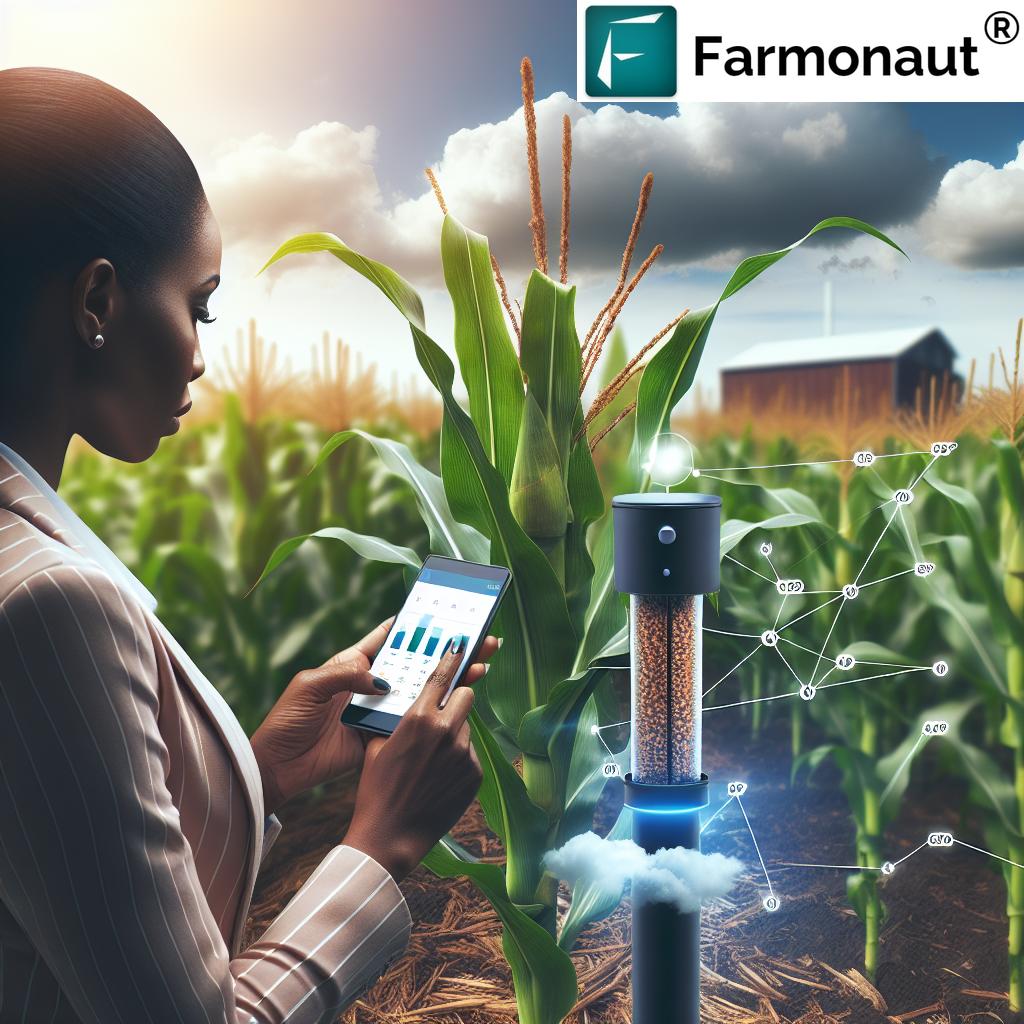
Some key features of Farmonaut’s farm management platform include:
- AI-Powered Crop Advisory: Personalized recommendations for crop management based on real-time data and historical patterns.
- Weather Integration: Accurate, localized weather forecasts to help with planning and risk management.
- Resource Tracking: Tools to monitor and optimize the use of water, fertilizers, and other inputs.
- Yield Forecasting: Advanced predictive models to estimate harvest yields and timing.
These tools are accessible through Farmonaut’s user-friendly mobile and web applications, ensuring that farmers can access critical information anytime, anywhere.
Access Farmonaut’s powerful tools:
The Impact of Precision Agriculture on California’s Economy
The adoption of precision agriculture techniques, spearheaded by companies like Farmonaut, is having a significant impact on California’s agricultural economy. By optimizing resource use and increasing yields, farmers are seeing improvements in their bottom line. Moreover, the data-driven approach to farming is helping to mitigate risks associated with climate change and market fluctuations.
Some key economic benefits include:
- Increased Crop Yields: Precision agriculture techniques have been shown to increase yields by up to 25% in some crops.
- Reduced Input Costs: By optimizing the use of water, fertilizers, and pesticides, farmers can significantly reduce their input costs.
- Labor Efficiency: Drone technology and smart farming systems help address labor shortages by automating many tasks.
- Quality Improvements: Precision management leads to more consistent crop quality, which can command higher prices in the market.
These economic benefits are not just limited to large-scale operations. Farmonaut’s technology is designed to be accessible to farmers of all sizes, helping to level the playing field in the agricultural sector.
Overcoming Challenges: Adoption and Implementation
While the benefits of precision agriculture are clear, the adoption of these technologies is not without its challenges. In California, farmers face several hurdles in implementing drone technology and other precision farming techniques:
- Initial Investment: The upfront cost of drone technology and associated software can be significant, especially for smaller farms.
- Technology Literacy: Many farmers need training to effectively use and interpret the data provided by precision agriculture tools.
- Regulatory Compliance: Navigating the regulatory landscape for drone usage in agriculture can be complex.
- Data Management: Handling and interpreting the vast amounts of data generated by precision agriculture systems can be overwhelming.
Farmonaut is addressing these challenges through a combination of user-friendly interfaces, comprehensive training programs, and flexible pricing models. The company also works closely with regulatory bodies to ensure compliance and advocates for policies that support the adoption of precision agriculture technologies.
The Future of Farming: AI and Machine Learning
As we look to the future of agriculture in California and beyond, artificial intelligence (AI) and machine learning are set to play an increasingly important role. Farmonaut is at the forefront of this trend, integrating AI into its drone technology and farm management solutions.
Some exciting developments in this area include:
- Predictive Analytics: AI algorithms can predict crop yields, disease outbreaks, and market trends with increasing accuracy.
- Automated Decision-Making: Machine learning models can suggest optimal times for planting, harvesting, and applying treatments.
- Image Recognition: Advanced AI can identify pests, diseases, and weeds from drone and satellite imagery with high precision.
- Robotics Integration: AI is paving the way for more autonomous farm operations, from drone flights to robotic harvesters.
These AI-driven innovations are not just improving efficiency; they’re fundamentally changing the way we approach agriculture, making it more data-driven and responsive to environmental changes.
Comparative Analysis: Traditional vs. Drone-Assisted Farming in California
| Farming Aspect | Traditional Method | Drone-Assisted Method | Estimated Time Savings | Estimated Cost Savings | Environmental Impact |
|---|---|---|---|---|---|
| Crop Monitoring | Manual field walks, time-consuming and labor-intensive | Rapid aerial surveys with multispectral imaging | 70% | 40% | Reduced vehicle emissions from fewer field visits |
| Irrigation Management | Scheduled watering, often leading to over-irrigation | Precision irrigation based on real-time soil moisture data | 30% | 25% | Significant water conservation |
| Pest Control | Broad application of pesticides | Targeted treatment of affected areas | 50% | 35% | Reduced chemical usage and environmental impact |
| Yield Prediction | Based on historical data and manual estimates | AI-driven analysis of aerial imagery and sensor data | 60% | 20% | Better resource allocation, reducing waste |
| Soil Analysis | Periodic soil sampling and lab testing | Continuous monitoring through spectral analysis | 80% | 30% | Improved soil health through precise management |
This table clearly illustrates the significant advantages of drone-assisted farming over traditional methods across various aspects of agricultural operations in California. The time and cost savings, coupled with the positive environmental impacts, make a compelling case for the adoption of Farmonaut’s drone technology in precision farming.
Policy and Support for Precision Agriculture
The growth of precision agriculture in California is not just a result of technological advancements; it’s also supported by evolving policies and support initiatives. As of 2024, we’re seeing increased government backing for the adoption of smart farming technologies:
- Grant Programs: California has introduced several grant programs to help farmers invest in precision agriculture technologies, including drone systems.
- Research Funding: Increased funding for agricultural research at universities and extension programs, focusing on precision farming techniques.
- Regulatory Framework: Updated regulations to facilitate the use of drones in agriculture while ensuring safety and privacy.
- Water Management Incentives: Programs that reward farmers for adopting water-efficient technologies, including precision irrigation systems.
These policy initiatives are crucial in accelerating the adoption of precision agriculture across California, helping farmers overcome initial barriers to entry.
Education and Workforce Development
As precision agriculture technologies become more prevalent, there’s a growing need for a skilled workforce to operate and maintain these systems. California is responding to this need through various educational and training initiatives:
- University Programs: California universities are introducing courses and degree programs focused on agricultural technology and precision farming.
- Vocational Training: Community colleges and vocational schools are offering certificates in drone operation and precision agriculture techniques.
- Extension Services: University extension programs are providing workshops and training sessions for farmers on the latest precision agriculture technologies.
- Industry Partnerships: Companies like Farmonaut are collaborating with educational institutions to provide hands-on training and internship opportunities.
These educational efforts are not only preparing the next generation of farmers but also creating new job opportunities in the agricultural technology sector.
Health and Safety Considerations
While precision agriculture offers numerous benefits, it’s important to consider the health and safety implications for agricultural workers. Drone technology and other precision farming tools can help address some long-standing safety concerns in agriculture:
- Reduced Exposure to Chemicals: Precision application of pesticides and fertilizers minimizes worker exposure to potentially harmful substances.
- Improved Ergonomics: Drones and automated systems can reduce the need for physically demanding tasks, potentially decreasing work-related injuries.
- Enhanced Weather Safety: Real-time weather monitoring and predictive analytics can help protect workers from extreme weather conditions.
- Mental Health Benefits: By reducing stress associated with crop management and improving farm profitability, precision agriculture can positively impact farmers’ mental health.
Farmonaut’s technology not only improves farm efficiency but also contributes to creating a safer and healthier work environment for agricultural workers.
The Role of Data Analytics in Modern Agriculture
At the heart of precision agriculture is the power of data analytics. Farmonaut’s platform leverages advanced agricultural data analytics to transform raw data into actionable insights for farmers. This data-driven approach is revolutionizing decision-making in agriculture:
- Historical Analysis: By analyzing years of crop data, farmers can identify long-term trends and optimize their farming strategies.
- Real-Time Monitoring: Continuous data collection allows for immediate response to changing conditions, such as sudden pest infestations or weather events.
- Predictive Modeling: Advanced algorithms can forecast crop yields, market trends, and potential risks, allowing for proactive management.
- Benchmarking: Farmers can compare their performance against industry standards and peers, identifying areas for improvement.
By harnessing the power of big data, Farmonaut is enabling California farmers to make more informed decisions, leading to improved productivity and sustainability.
Integrating Precision Agriculture with Existing Farm Systems
One of the challenges in adopting precision agriculture technologies is integrating them with existing farm systems. Farmonaut addresses this challenge by offering flexible solutions that can be tailored to each farm’s unique needs:
- Scalable Solutions: Farmonaut’s technology can be implemented gradually, allowing farmers to start small and expand as they see results.
- Compatibility: The platform is designed to work with a wide range of existing farm equipment and management systems.
- Customization: Farmers can choose which aspects of precision agriculture to implement based on their specific needs and challenges.
- API Integration: For more tech-savvy users, Farmonaut offers API access, allowing for seamless integration with other digital tools and systems.
Explore Farmonaut’s API capabilities: Farmonaut API
For developers: API Developer Docs
The Economic Impact of Precision Agriculture in California
The adoption of precision agriculture technologies, including Farmonaut’s drone solutions, is having a significant economic impact on California’s agricultural sector:
- Increased Productivity: Precision farming techniques are helping California farmers produce more with fewer resources, boosting overall agricultural output.
- Cost Savings: By optimizing resource use, farmers are seeing substantial reductions in input costs, improving profitability.
- Job Creation: The growth of agritech is creating new job opportunities in areas such as data analysis, drone operation, and precision agriculture consulting.
- Export Competitiveness: Improved quality and consistency of crops are helping California maintain its position as a leading agricultural exporter.
These economic benefits are not only supporting individual farmers but also contributing to the overall strength of California’s agricultural economy.
Looking Ahead: The Future of Precision Agriculture in California
As we look to the future, the role of precision agriculture in California’s farming landscape is set to grow even further. Some trends and developments to watch include:
- 5G Integration: The rollout of 5G networks will enable faster, more reliable data transmission, enhancing real-time decision-making capabilities.
- Internet of Things (IoT): Increased use of IoT sensors will provide even more granular data on crop and soil conditions.
- Autonomous Systems: Development of fully autonomous farm equipment, guided by data from drones and satellites.
- Climate Resilience: Precision agriculture will play a crucial role in adapting to climate change, helping farmers navigate increasingly unpredictable weather patterns.
Farmonaut is at the forefront of these developments, continuously innovating to meet the evolving needs of California’s agricultural sector.
Farmonaut Subscription Plans
To make our cutting-edge precision agriculture solutions accessible to farmers of all sizes, Farmonaut offers flexible subscription plans. Choose the plan that best fits your needs and start revolutionizing your farming practices today.
Frequently Asked Questions
Q: How does Farmonaut’s drone technology differ from traditional farming methods?
A: Farmonaut’s drone technology provides real-time, high-resolution data on crop health, soil conditions, and other critical factors. This allows for more precise and timely interventions compared to traditional methods, leading to optimized resource use and improved yields.
Q: Is Farmonaut’s technology suitable for small-scale farmers?
A: Yes, Farmonaut offers scalable solutions that can be adapted to farms of all sizes. Our flexible pricing models and user-friendly interfaces make the technology accessible to small-scale farmers.
Q: How does Farmonaut ensure data privacy and security?
A: Farmonaut takes data privacy very seriously. We use industry-standard encryption and security protocols to protect all farmer data. Our systems are regularly audited to ensure compliance with data protection regulations.
Q: Can Farmonaut’s technology help with organic farming?
A: Absolutely. Our precision agriculture tools are particularly valuable for organic farmers, as they allow for early detection of pest and disease issues, enabling timely intervention with organic-approved methods.
Q: How often is the satellite and drone data updated?
A: The frequency of updates depends on the subscription plan. However, most plans offer daily satellite updates and the ability to conduct drone surveys as needed.
Conclusion
As we’ve explored in this comprehensive overview, the agricultural landscape in California is undergoing a significant transformation, driven by innovations in precision agriculture and drone technology. Farmonaut is at the forefront of this revolution, providing farmers with the tools and insights they need to face the challenges of modern agriculture.
From improving crop yields and reducing resource waste to promoting sustainable farming practices and creating new job opportunities, the impact of precision agriculture is far-reaching. As we move forward, the integration of technologies like AI, machine learning, and IoT will continue to push the boundaries of what’s possible in farming.
For California’s farmers, embracing these technologies is not just about staying competitive; it’s about ensuring the long-term sustainability and resilience of the state’s agricultural sector. With companies like Farmonaut leading the way, the future of farming in California looks brighter and more technologically advanced than ever before.
As we conclude, we encourage farmers, agricultural professionals, and technology enthusiasts to explore the possibilities offered by precision agriculture. Whether you’re looking to optimize your farm operations, reduce your environmental impact, or simply stay ahead of the curve in agricultural innovation, Farmonaut’s drone technology and farm management solutions offer a path forward.
The agricultural revolution is here, and it’s happening in the skies above California’s farms. Join us in shaping the future of agriculture, one drone flight at a time.







